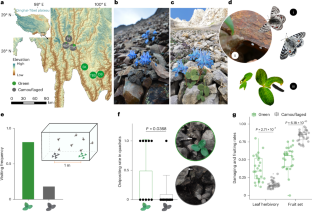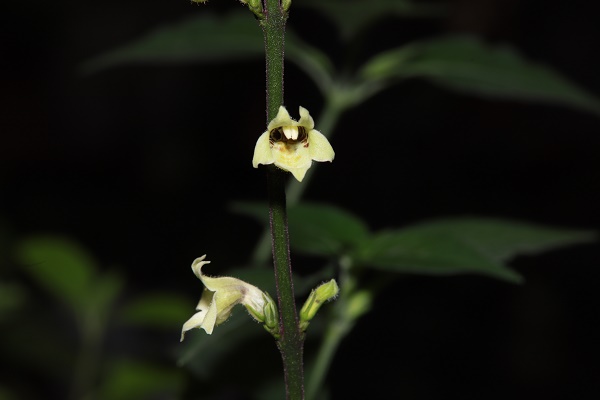2025-03-29 中国科学院(CAS)
<関連情報>
- https://english.cas.cn/newsroom/research_news/life/202503/t20250331_908988.shtml
- https://www.nature.com/articles/s41559-025-02653-3
高山植物におけるカモフラージュの遺伝的基盤と昆虫草食動物との長期的共進化 Genetic basis of camouflage in an alpine plant and its long-term co-evolution with an insect herbivore
Han Zhang,Pan Zhang,Yang Niu,Tongzhou Tao,Gang Liu,Congcong Dong,Zeyu Zheng,Zengzhu Zhang,Ying Li,Zhimin Niu,Wenyu Liu,Zemin Guo,Shaoji Hu,Yang Yang,Minjie Li,Hang Sun,Susanne S. Renner &Jianquan Liu
Nature Ecology & Evolution Published:10 March 2025
DOI:https://doi.org/10.1038/s41559-025-02653-3

Abstract
Camouflage through colour change can involve reversible or permanent changes in response to cyclic predator or herbivore pressures. The evolution of background matching in camouflaged phenotypes partly depends on the genetics of the camouflage trait, but this has received little attention in plants. Here we clarify the genetic pathway underlying the grey-leaved morph of fumewort, Corydalis hemidicentra, of the Qinghai-Tibet Plateau that by being camouflaged escapes herbivory from caterpillars of host-specialized Parnassius butterflies. Field experiments show that camouflaged grey leaves matching the surrounding scree habitat experience reduced oviposition by female butterflies and herbivory by caterpillars, resulting in higher fruit set than that achieved by green-leaved plants. The defence is entirely visual. Multi-omics data and functional validation reveal that a 254-bp-inserted transposon causes anthocyanin accumulation in leaves, giving them a rock-like grey colour. Demographic analyses of plant and butterfly effective population sizes over the past 500 years indicate that plant populations have been more stable at sites with camouflage than at sites with only green-leaved plants. In the recent past, populations of Parnassius butterflies have declined at sites with camouflaged plants. These findings provide insights into the genetics of a plant camouflage trait and its potential role in the rapidly changing dynamics of plant–herbivore interactions.


